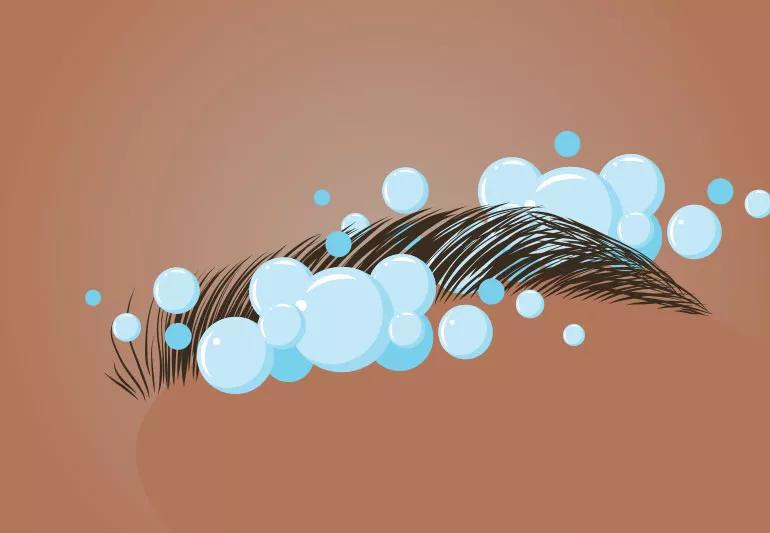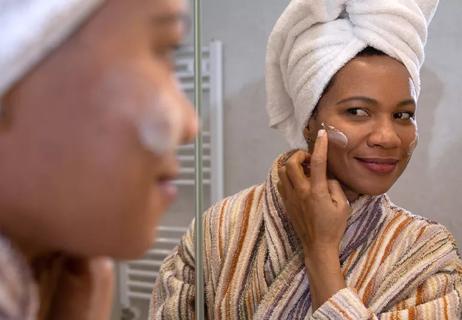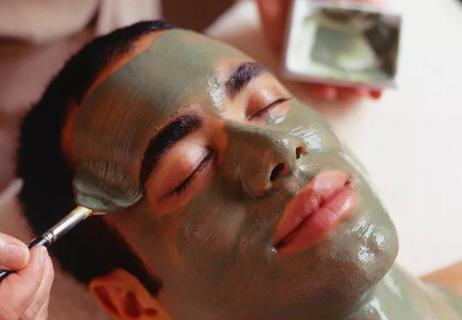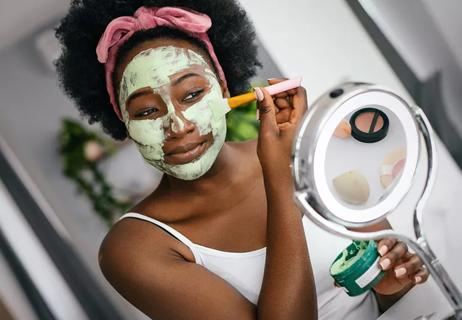From icing to taping, experts chime in on what’s worth trying and what’s better off skipping

We know you already know: The internet is full of bad advice… But it’s also full of just as much good advice. So, how can you be sure which is which?
Advertisement
Cleveland Clinic is a non-profit academic medical center. Advertising on our site helps support our mission. We do not endorse non-Cleveland Clinic products or services. Policy
Skin care is one of the hottest topics on TikTok, but don’t believe everything you watch. When it comes to your health — and that includes your skin! — a good rule of thumb is to verify any online advice with actual medical sources, like doctors, aestheticians and other licensed healthcare professionals.
To help you separate skin care fact from fiction, we asked the pros to weigh in on some of the tricks, tips and trends that have taken over TikTok.
When you’re trying to achieve smooth, glowing, ageless skin, it can feel nearly impossible to wade through all of the internet’s advice to find its best gems.
Here are the TikTok tidbits that our healthcare professionals say are based in science — just be sure you read up on each trend before trying it, as they’re not all the right fit for every type of skin.
Icing your face isn’t just for black eyes and bumps on your forehead. In a world of wacky wellness-related tips and tricks, this TikTok trend takes it back to basics: Facial icing to reduce puffiness.
When you apply an ice pack to your face, the low temps cause blood to rise beneath the surface of your skin, which can tackle puffiness, brighten your complexion and even reduce undereye bags. “It’s a temporary way to get a little wake-up for your skin after a long night or a hard day,” says aesthetician Lori Scarso.
Advertisement
Slugging is a nighttime routine that involves slathering a thin layer of petroleum jelly over your face to create a protective barrier. Doing so keeps water from evaporating from the surface of your skin, which can moisturize, protect and repair damage.
“Petroleum jelly is a simple and very occlusive ointment,” says dermatologist Amy Kassouf, MD. But she also makes it clear that this trend isn’t for everyone. So, if you want to start doing it, it’s important to figure out whether slugging is a good fit for your skin.
Dreaming of luxuriously, fluffy eyebrows? “Soap brows are the process of making your eyebrows look fuller and more luxurious, by using soap as a leave-in product,” explains dermatologist Alok Vij, MD.
But there are some rules you need to follow if you want to safely achieve this look, like using a soap that lists glycerin as its primary ingredient. Even so, you could risk allergic or irritative reactions, so make sure you read up on soap brows before you try to create them.
DIY dermaplaning, which is essentially just the act of shaving your face, is an at-home form of a professional procedure. TikTok’s version calls for a teeny-tiny straight razor that you can purchase just about anywhere you buy skin care products, and it can give your skin a bit of a glow.
Dermatologist Melissa Piliang, MD, says the process also helps remove dead skin cells from your skin’s surface, which can work wonders on a dull complexion and prevent clogged pores. Just be sure you’re not dealing with breakouts or another skin condition when you try it.
As you can probably imagine, many of TikTok’s skin care tips are not ones that your doctor would recommend. Some are harmless but ultimately unnecessary, while others are actually very dangerous.
Some TikTokkers swear by double cleansing, or washing your face twice — first with an oil-based product and then again with a water-based cleanser. It could be helpful for people with very oily skin, but for most skin types, this trend can do more harm than good.
“Overwashing can lead to dryness, irritation and the breakdown of the skin barrier, which subsequently causes issues like breakouts and eczema,” warns dermatologist Jane Wu, MD.
What to do instead: There are lots of other options for tackling oily skin, and whatever your skin type, be sure to focus on finding a cleanser that suits your unique needs. Micellar water can be a stellar option for sensitive skin, and foaming cleansers are great at lifting oils and dirt from your skin.
Advertisement
Social media influencers would have you believe that you absolutely must own a skin care fridge. Fans claim that they’re a vital way to preserve the integrity of some types of skin care products. But are they really necessary?
“It can feel very nice to put something cool on your face, especially on a hot day,” says Dr. Piliang. But that’s about it. Beyond that, the benefits of refrigerating your skin care products are slim to none.
What to do instead: It’s OK to keep skin care products in the cold, if you want to, and your regular fridge will do the trick. But honestly? Most of your products don’t need it. They’re all formulated and tested to withstand most regular home storage conditions.
Some TikTokkers use face tape to try to smooth out wrinkles and give themselves a more lifted look around their eyes and cheeks. But skin is soft and pliable, so even if your wrinkles level out for a moment, they’ll come back pretty quickly.
Plus, taping your face can cause irritation, allergic reactions and even blisters. It’s just not worth it, especially when there are other skin care products and aesthetic procedures that can do it much better. “Also, think about your lifestyle,” advises plastic surgeon Martin Newman, MD. “Avoid the sun, avoid toxins and drink plenty of water.”
Advertisement
What to do instead: First, work on preventing wrinkles by taking good care of your skin as you age. But if the crow’s feet have already set in, look into options like Botox® and Dysport®, along with rejuvenating procedures like microneedling. Or you could just — dare we say it? — start to embrace those laugh lines!
The peel of a banana isn’t of much use to you, except maybe in your compost bin … or is it? Some social media skin care gurus claim that the simple act of rubbing an antioxidant-rich banana peel on your face can do wonders for your skin.
But dermatology resident Taylor Bullock, MD, says rubbing a peel on your face won’t give you enough antioxidants to make it worthwhile. “If your goal is to have a skin care routine full of antioxidants, you’re much better off applying an antioxidant-rich skin care product to your face instead,” he says.
What to do instead: If you’re looking for a powerful antioxidant that can work wonders for your skin, try vitamin C instead. And check out other anti-aging skin care ingredients that will help you combat wrinkles and keep skin supple.
Of all the topics on this list, nasal tanning sprays are the most dangerous. When inhaled, these sprays that can temporarily darken your skin and make you look tanner. But the key ingredient is Melanotan II, sometimes known as “the Barbie drug,” and when you inhale it, you give it a direct path into your bloodstream.
Advertisement
Nasal tanning sprays come with serious and even life-threatening health risks, including muscle injury and melanoma. “Melanotan sprays just aren’t safe, period,” states dermatologist Allison Vidimos, RPh, MD.
What to do instead: If you want a bronzy glow, stick to a sunless tanner — and when you’re outdoors, please don’t forget your sunscreen!
To learn more on these topics, listen to the Health Essentials Podcast episode, “Skin Care Tips, Tricks and Trends.” New episodes of the Health Essentials Podcast publish every Wednesday.
Learn more about our editorial process.
Advertisement

Pantothenol is a powerful moisturizer and can help repair damaged skin and hair

This alternative to retinol may be easier on sensitive skin

Day creams should protect your skin, night creams should soothe and repair it

Pure cocoa butter can help keep your skin supple, with a subtly delicious scent

Focus on the philosophy — replenishing and respecting your skin — not necessarily the steps

Lie back and relax as a skin specialist cleanses, exfoliates and hydrates your skin

The powerhouse oil fights fine lines and wrinkles, soothes sunburn and a whole lot more

Moisturizing, wound-healing, anti-aging: This botanic extract can do a whole lot for your skin

Type 2 diabetes isn’t inevitable with these dietary changes

Applying a hot or cold compress can help with pain